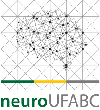Banca de DEFESA: RAÍSSA BENOCCI THIBES
Uma banca de DEFESA de MESTRADO foi cadastrada pelo programa.DISCENTE : RAÍSSA BENOCCI THIBES
DATA : 05/05/2022
HORA: 08:00
LOCAL: Remoto
TÍTULO:
Intraoperative Recordings of Postero-Superior Insular cortex in patients with Peripheral Neuropathic Pain by Brachial Plexus Avulsion
PÁGINAS: 67
GRANDE ÁREA: Ciências da Saúde
ÁREA: Medicina
RESUMO:
Introduction: Postero-superior insular (PSI) cortex is a main target of spinothalamic cortical projections and a myriad of neuroimaging studies have pointed to PSI as important for the integration of the discriminative aspect of pain and thermoception. Both invasive and non-invasive stimulation of this cortical region increase heat pain thresholds in healthy, epileptic, and neuropathic pain patients. The insula is thought to be hyperactive or disinhibited in several models of neuropathic pain and local increase in BOLD signal, thought to be related to gamma-band oscillations, were commonly reported in neuropathic pain. However, the actual baseline activity of the PSI and its response to thermal painful stimuli remain largely unknown, and this could provide us with more accurate models on the emergence of chronic pain in the brain. Methods: Six patients highly responsive to non-invasive PSI stimulation underwent local field potential (LFP-250 Hz of sampling frequency and 1-80Hz of cut-off frequencies) and micro-recording of the PSI at rest and after painful and non-painful stimuli during PSI DBS implantation (NCT04279548): power spectral density was calculated (epochs of 5 seconds and the classic frequency bands). Multi-unit activity (MUA) was recorded (20kHz of sampling frequency and 1-5000Hz of cut-off frequencies) in spontaneous activity (rest-MUA) with duration of 30 seconds and the spike sorting with K-clusters algorithm. Results: Under rest-LFP power had a peak in theta (6.0-7.5 Hz) and in alpha (9.5-10.5 Hz), while the delta band had the largest spectrum power for all conditions. Painful heat stimulus increased alpha, sigma and beta power by 17.28 to 41.06% (from baseline) while non-painful stimulation decreased power from alpha to gamma ranges, on average. Micro-recording (n= 4) showed spiking activity of 10.2 Hz (2.28-16.8 Hz). Conclusion: PSI LFP at rest in neuropathic pain showed a predominant low frequency activity, which was modulated differently by experimental painful and non-painful stimuli.
MEMBROS DA BANCA:
Presidente - Interno ao Programa - 1672975 - JOAO RICARDO SATO
Membro Titular - Examinador(a) Interno ao Programa - 1653406 - ABRAHAO FONTES BAPTISTA
Membro Titular - Examinador(a) Externo à Instituição - HELENE BASTUJI GARCIA LARREA
Membro Suplente - Examinador(a) Interno ao Programa - 1955999 - ANDRE MASCIOLI CRAVO
Membro Suplente - Examinador(a) Externo ao Programa - 1946319 - DIOGO COUTINHO SORIANO
Membro Suplente - Examinador(a) Externo à Instituição - FABIO LUIZ FRANCESCHI GODINHO




